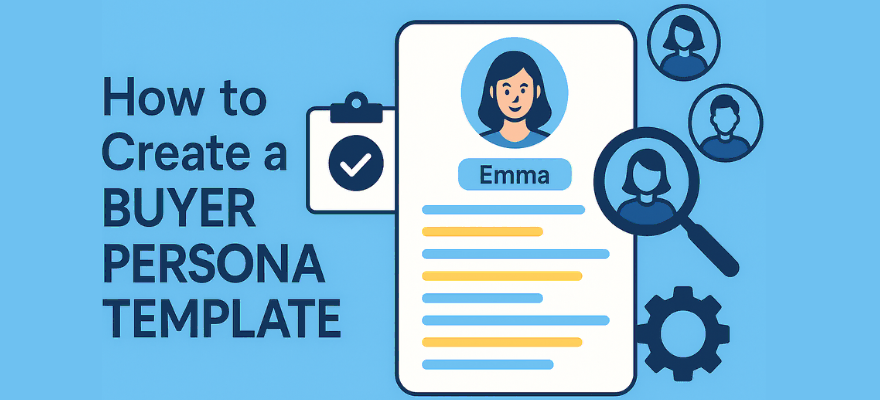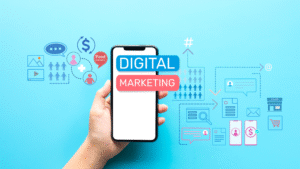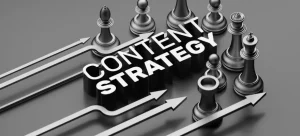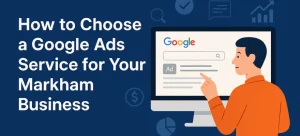Creating a buyer persona is not about building imaginary characters. It’s about fixing a bigger issue. If your ads are ignored, your emails don’t convert, or your content attracts the wrong crowd, the problem might not be the message. It’s who you’re aiming it at.
You’re not missing strategy. You’re missing clarity. And it starts with defining who you’re really selling to.
If you don’t know exactly who you’re selling to, every dollar you spend on marketing is basically a tax on not knowing your customer.
Key Takeaways
- A buyer persona is a semi-fictional rep of your ideal customer
- Use real data, interviews, and market research to build it
- Don’t forget about negative personas
- Keep templates clear, visual, and accessible
- Update regularly to match your target market and consumer behaviour
What Is a Buyer Persona and Why Are Buyer Personas Important?

Defining Buyer Personas in Marketing
A buyer persona is basically your target customer, with a face, a name, and a story.
It’s built from research, demography, psychographics, and real consumer behaviour.
Think of it as your north star for marketing. The clearer the persona is, the more precise your marketing messages become.
Understanding the Concept of an Ideal Customer
Your ideal customer is the person who needs your product or service and is happy to pay for it.
You’re not just guessing. You’re using data, feedback, analytics, and maybe a few interviews to get the facts.
What do they care about?
What frustrates them?
What motivates them to buy?
It’s not just about their job title. It’s about their pain points, goals, and what success looks like to them.
The Role of Buyer Personas in Your Marketing Strategy
Here’s how buyer personas help:
- Sharper messaging
- Less wasted budget on the wrong potential customer
- Stronger connections in email and social
- Better targeted advertising
When you get this right, everything else in your marketing strategy improves. That includes everything from blog posts to sales calls.
The Benefits of Buyer Personas for Your Business

Improved Targeting and Messaging
Instead of shouting into the void, you’ll start conversations that feel one-on-one with your target audience.
You’ll know what to say, where to say it, and how.
Use buyer personas to:
- Tailor your tone for email
- Create landing pages that convert
- Write ads that actually get clicked
- Guide personalization and customer relationship management
More Effective Content and Campaign Planning
Imagine creating a blog post that feels like it was written just for your reader. That’s the power of having a clear customer persona.
Your marketing efforts become laser-focused.
Campaigns become smarter, not louder.
Better Alignment Across Marketing, Sales, and Product Teams
With one clear persona, your entire marketing and sales team gets on the same page.
No more back and forth over who we’re selling to.
Everyone from your sales team to your designers is focused on the same ideal buyer, which strengthens communication and improves customer experience.
How to Create a Buyer Persona Step-by-Step
Conducting Buyer Persona Research
Start with what you’ve got:
- Google Analytics and web analytics
- CRM database
- Social media insights
- Customer interviews
- Surveys (bonus points if you use tools like HubSpot or Typeform)
The goal? Find patterns. Look for repeated goals, common challenges, or shared behavior.
Identifying Your Ideal Customer
Use that data to outline your ideal buyer:
- Age, job title, location (the basics)
- Buying triggers
- Roadblocks
- Channels they trust (email, blog, LinkedIn, and other social media platforms)
You want to understand not just who they are but also why they buy. This includes their motivation, mindset, and goal orientation.
Segmenting Different Types of Buyer Personas
You’re likely serving more than one buyer persona.
Break them down using market segmentation:
- Decision-makers vs users
- First-time buyers vs repeat customers
- Budget-conscious vs premium seekers
Each type of customer might need different marketing messages based on their education, roles, and pain levels.
Persona Interview Techniques for Better Insights
Don’t skip this. Persona interviews give you gold.
Ask questions like:
- What made you look for this product or service?
- What alternatives did you consider?
- What frustrated you in the process?
These answers shape your understanding and improve lead generation.
Using a Buyer Persona Template to Build Buyer Personas

What to Include in a Buyer Persona Template
A strong buyer persona template helps you define the essentials without overcomplicating things. These are the fields that matter most:
- Name and photo (yes, give your persona a name because it helps humanize the process)
- Demographics (age, location, job title)
- Pain points and challenges
- Goals and desired outcomes
- What success looks like to them
- Preferred platforms (email, social, blog)
- Purchase triggers and dealbreakers
- Key influences in their decision-making process
Each point helps your team understand who they’re targeting and how to talk to them.
How to Structure and Share Your Persona Template
You don’t need a fancy template or software to get started. Just open a Google Doc or Sheet and lay out the essentials. Keep it clean and simple.
Structure it like this:
- Use headings or a basic table to list fields like name, job title, demographics, pain points, goals, and buying triggers.
- Add rows for how they consume content, what influences their decisions, and what they look for in a brand or product.
Make it collaborative. Share it with your sales and marketing team so they can add real-world feedback from the conversations they’re having every day.
This should be a working document that guides your messaging, tone, and overall targeting. Keep it updated and make sure everyone involved in your marketing sees it as a go-to reference.
Sample Persona Template Walkthrough
Let’s say you run a digital ad agency in Toronto.
Your persona: Socially-savvy Marketing Director at a mid-size ecommerce brand.
They’re:
- Spending 10k/month on advertising
- Overwhelmed with DIY tools
- Looking for a partner who gets results fast
Now you know what tone to use, what pain points to speak to, and what solutions to highlight in your persona template.
Buyer Persona Examples
B2B Buyer Persona Example
Claire: A B2B customer persona looking for scalable solutions, cares about ROI, avoids anything vague or padded.
Alex: A Director of Operations at a SaaS company who values efficiency, looks for automation tools, and wants detailed onboarding support.
B2C Buyer Persona Example
Emma: A budget-conscious consumer, checks reviews, and trusts influencers more than brands.
Maya: A university student balancing school and part-time work, relies on TikTok recommendations and prefers flexible payment options.
Ecommerce Persona Template
Charlie: Shops on mobile, dislikes slow sites, and prioritizes fast shipping options.
Liam: A last-minute shopper who buys based on urgency, trusts customer ratings, and wants real-time delivery updates.
Don’t Forget Negative Buyer Personas
What Is a Negative Buyer Persona?
Not everyone’s your target customer. A negative buyer persona is someone who drains your resources or never buys.
Could be:
- Students researching for a class
- Freeloaders after your free tier
- Leads with no budget
How to Create a Negative Persona
- Track who ghosts after the first call
- Ask your sales team who always says no
- Look at churned customers with low LTV
This isn’t being rude. It’s being strategic.
Why Negative Personas Help Refine Your Marketing
You’ll save time, budget, and sanity.
Plus, your real target audience will thank you for not diluting the message with irrelevant marketing campaigns and weak consumer behaviour signals.
How to Use Buyer Personas Across Your Marketing Strategy
Integrating Buyer Personas Into Campaigns
Personalize like a pro. Your buyer persona should influence:
- Your ad targeting
- Your copy
- Your landing page structure
- Even your visuals
Use that knowledge to build better customer experiences.
Aligning Content Creation With Buyer Needs
Say goodbye to generic blogs. You’ll be creating stuff that speaks directly to:
- Their challenges
- Their industry jargon
- Their goals
That’s how persona meets experience.
Using Buyer Personas in Paid Ads, Emails, and Landing Pages
Quick tips:
- In advertising, match the pain point in the first line
- In emails, use subject lines that speak to the persona’s trigger
- On landing pages, lead with the outcome they want
How to Define Your Buyer Personas With Persona Research Tools
Free and Paid Tools to Build a Buyer Persona
Tools we like:
- HubSpot Make My Persona (free)
- Xtensio
- Google Analytics
- Looker Studio (for visualising data)
These help build a solid persona profile without getting lost in spreadsheets.
Questions to Ask During Persona Interviews
Don’t overcomplicate it.
Ask:
- What’s a day in your work life like?
- What’s your biggest challenge right now?
- Where do you look for solutions?
- What does a win look like for you?
These shape your understanding and help you optimize customer relationship management.
Validating and Updating Your Buyer Personas Regularly
Things change. So should your personas.
Recheck them:
- Every 6 to 12 months
- After launching new product or service offerings
- When performance drops
Talk to your sales and marketing team because they hear it all first.
FAQs
What is a buyer persona in simple terms?
It’s a fictional version of your target customer, created using data, psychographics, and market research.
How many buyer personas do we need?
Start with 1 or 2. Add more based on your market segmentation or product lines.
How do I gather data for a buyer persona?
Check your CRM database, interview customers, use surveys, and study analytics.
What makes a good buyer persona template?
One that’s clear, collaborative, and accessible for your entire marketing team and sales team.
Do buyer personas actually work?
Yes. They improve communication, lead generation, and every touchpoint of the customer experience.
Conclusion
Knowing how to create a buyer persona changes the game.
You stop guessing. You start connecting with your ideal buyer.
Your content lands better. Your emails get more replies. Your ads convert stronger.
Start now. Talk to your team, interview a few customers, and sketch out your own template using the tips in this guide. Get that first customer persona down. Your future marketing team will thank you.
In the end, everything improves when you know who you’re talking to. That is the power of a well-defined persona.
Need help turning your buyer personas into real results? Let’s turn what you now know into campaigns that convert. Whether it’s improving your ad strategy, creating targeted content, or setting up smarter email flows, we’ve got you!




